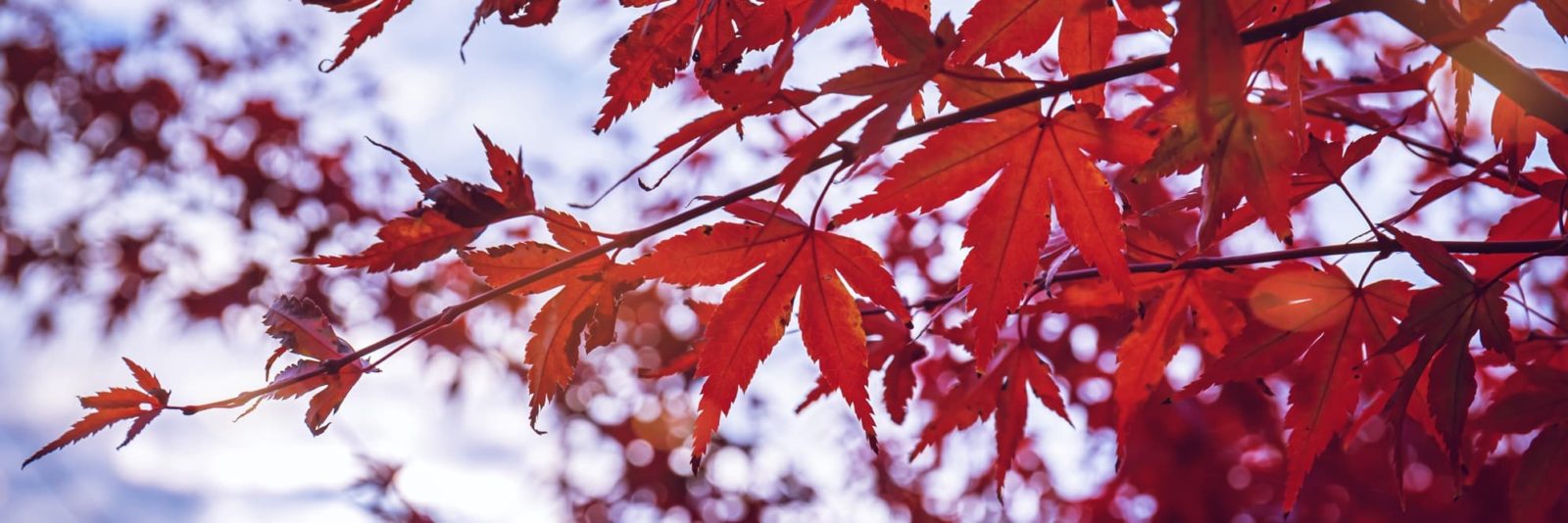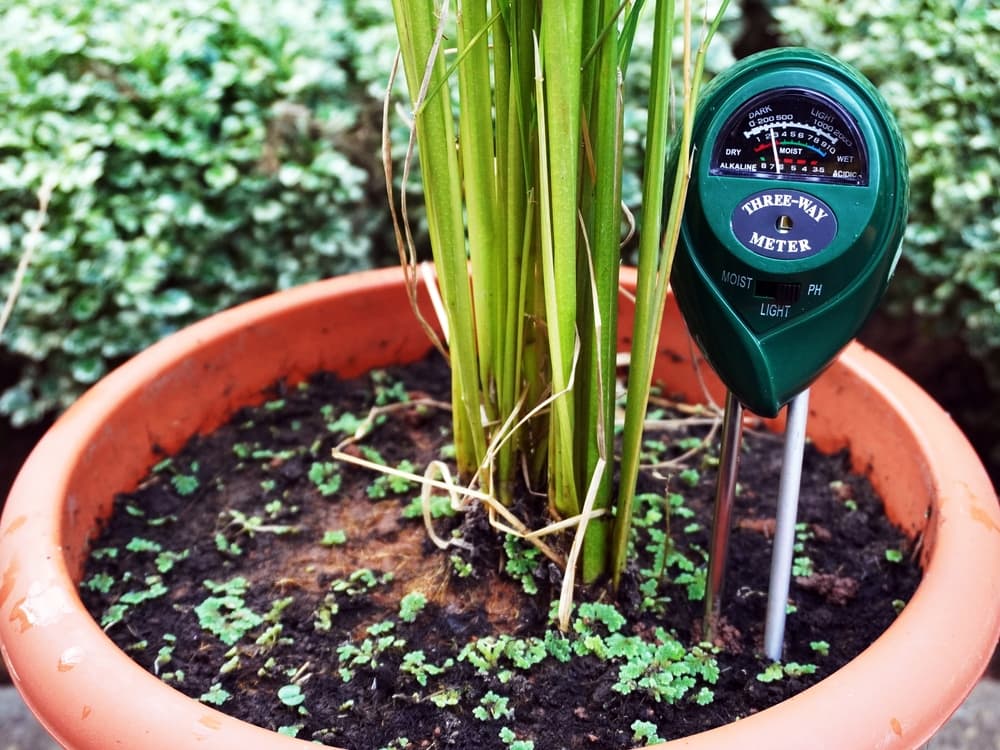Horticulturists Explain Why Ericaceous Compost Is A Must For Acidic-Loving Acers


Elizabeth is a Permaculture Garden Designer, Sustainability Consultant and Professional Writer, working as an advocate for positive change. She graduated from the University of St. Andrews with an MA in English and Philosophy and obtained a Diploma in Applied Permaculture Design from the Permaculture Association.
Reviewed By DAN ORI

Dan has over 27 years’ under his belt caring for plants and gardens. Working as a Horticultural Instructor and Consultant, he draws on a diverse range of experience that includes working as a Head Gardener, Tree Surgeon, Garden Centre Trouble Shooter, and writer of academic papers. Dan has a Level 3 Diploma in Horticulture and is currently a candidate for the RHS’s most prestigious award – The Master of Horticulture.
IN THIS GUIDE
Acers are trees that like acidic pH levels, so using ericaceous compost can sometimes help keep them healthy and give them the growing conditions they need.
However, while most Acers do enjoy acidic conditions, many are surprisingly tolerant of neutral or even alkaline soils, as long as their roots receive sufficient moisture and oxygen.
When growing in containers, using ericaceous compost for Acers can be optimal.
However, when growing in the ground in your garden, special ericaceous compost may not actually be required.
What Is Ericaceous Compost?
Ericaceous compost is a growing medium that has a low pH, which makes it suitable for acid-loving plants.
Compost is made up of decomposed or partially decomposed organic matter.
Sometimes, the term is also used to refer to potting mixes, or growing media. But technically, potting mixes are made up of compost plus other materials.
Both ericaceous composts and ericaceous potting mixes can be useful when growing Acers and other acid-loving plants in your garden.

Though it is important to remember that composts and potting mixes are not exactly the same thing.
An ericaceous compost might be used as a mulch to improve the soil and add fertility around acid-loving plants grown in the ground.
It might also be used to top up containers when repotting Acers or other plants which enjoy acidic conditions.
It will also often be used alongside a loam-based potting mix or growing medium to fill the containers in which Acers will be grown.
What Are Acers?
Acers belong to a diverse genus of trees which includes large trees (maples, and the sycamore), and small trees which are really more like shrubs (including the ever-popular Japanese Acers: Acer palmatum).

A. palmatum are attractive small trees that are perfect for small gardens and container growing.
There is great variety in the leaf colour and foliage of these Acers, and they are highly prized for their foliage colours and autumn hues.
Do You Always Need To Use Ericaceous Compost For Acers?
Acer palmatum, and other Japanese maples, when grown in your garden, may not require soil amendment to alter pH.
If you have a soil which is reasonably moist yet free-draining and not compacted, these trees should endure even where the conditions are neutral or even slightly alkaline in pH.

Many refer to the excellent Westonbirt arboretum as proof that Acers can thrive in any conditions – where many Acers thrive in the Cotswolds’ limestone soil.1Ballard, M. (n.d.). Westonbirt, The National Arboretum. Westonbirt Forest Design Plan. Retrieved March 9, 2023, from https://www.forestryengland.uk/sites/default/files/documents/Westonbirt%20Forest%20%28Arboretum%29%20Design%20Plan%202021-2030-merged-compressed_0.pdf
However the truth is not quite so straightforward, as experienced Horticulturist Dan Ori explains:
“People often quote the Acers at Westonbirt arboretum as proving that they can grow on non-acid soils, but firstly not all are Japanese maples, and secondly there is a difference between tolerating with lots of help and years to adapt, rather than thriving from the moment it is planted.
“Japanese Acers will tolerate most soil types but only really do well in acidic moist but not wet soil.”2Hansen, S. M. (n.d.). Maples in the Landscape. Utah State University. https://digitalcommons.usu.edu/extension_curall/2188/
So, while these trees are not as sensitive to soil pH as many other ericaceous plants, when growing Acers in containers, using ericaceous compost will likely yield the best results.
Deciding Where To Grow Acers

If you have particularly alkaline soil, then you will likely do best if you grow Acers in containers.
Otherwise, you can generally place them in the ground in your garden.
Think about all the different environmental factors when choosing the best location – not just the soil pH.
They can thrive in full sun, dappled shade or partial shade.
Typically, they will do best in a sheltered spot, though most cultivars can cope with some wind exposure.
These trees are much less fussy than a lot of people think.
If you have a heavy clay soil, make sure you amend it with plenty of organic matter to improve soil structure and drainage before you plant your Acer.
Understanding Your Soil Type

In order to decide whether you need to grow Acers in containers or you can grow in the ground, your first step should be to determine your soil pH.
You can get clues about the soil in your garden from the plants already growing there and their needs, and get a rough idea about whether it is acidic, neutral or alkaline from simple home tests with vinegar and bicarbonate of soda.
But to determine the pH, you will need to get a soil testing kit.
If your soil pH is much above 7, it is alkaline and it may be better to grow Acers and other ericaceous plants, if you wish to grow them, in containers.
Learn more about soil testing in this guide.
Choosing A Potting Mix For Acers

If you decide to grow Acers in containers – for whatever reason – it is important to choose a growing medium to optimise conditions and ensure that the small trees remain as healthy as possible.
A 50-50 mix of ericaceous compost and John Innes No 3 is generally thought to be the best option.
John Innes No. 3 is a nutrient-rich loam-based potting mix that is used to establish shrubs and trees and plants which will be kept in their containers for a long period of time.
DIY Acer Potting Mix

If you want to make a similar potting mix yourself, it is made up of:
- 7 parts sterilised loam
- 3 parts peat substitute (coir, leaf mould, woody compost)
- 2 parts loose sand
Mix these ingredients at a ratio of 1:1 with an ericaceous compost which you buy (or make using more acidic organic matter, which can yield more varied results).
Acidic materials for an ericaceous compost include leaves, especially oak, pine needles, citrus, onions, sawdust from fresh-cut wood.
Note that pH will return to a more neutral level over time.
Sulphur is sometimes added to containers for ericaceous plants to provide more acidic conditions over time.
However, since Acers are not usually fussy, this is not essential in their case.

To summarise – while this mix is said to be optimal, Japanese maples, or Acers will also usually grow fine in a typical loam-based compost.
“Unlike most acid-loving plants, Japanese maples are more tolerant of higher pH – often surviving in alkaline soils,” says Dan Ori.
“But if you have alkaline soil then it is advised to grow them in ericaceous compost or choose an alternative Acer that thrives in lime/alkaline soil like Acer campestre ‘Nanum’.”
References
- 1Ballard, M. (n.d.). Westonbirt, The National Arboretum. Westonbirt Forest Design Plan. Retrieved March 9, 2023, from https://www.forestryengland.uk/sites/default/files/documents/Westonbirt%20Forest%20%28Arboretum%29%20Design%20Plan%202021-2030-merged-compressed_0.pdf
- 2Hansen, S. M. (n.d.). Maples in the Landscape. Utah State University. https://digitalcommons.usu.edu/extension_curall/2188/
